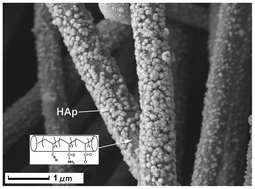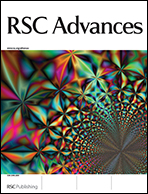Synthesis and characterization of hydroxyapatite on hydrolyzed polyacrylonitrile nanofiber templates†
Abstract
In mimicking the chemical structure of collagen nanofiber, electrospun

- This article is part of the themed collection: Bioactive surfaces for hard tissue regeneration

 Please wait while we load your content...
Please wait while we load your content...